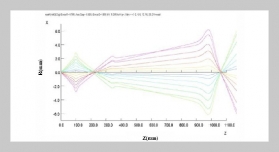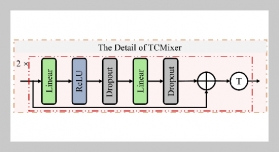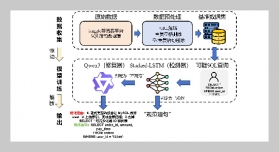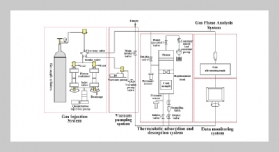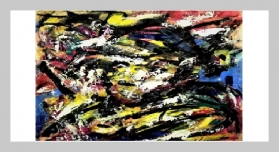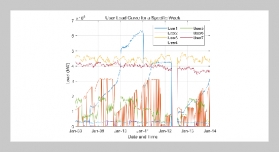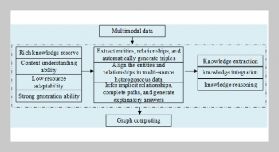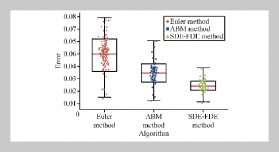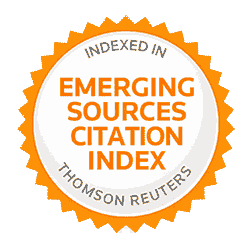- [1] A. M. Ikotun, A. E. Ezugwu, L. Abualigah, B. Abuhaija, and J. Heming, (2023) “K-means clustering algorithms: A comprehensive review, variants analysis, and advances in the era of big data" Information Sci�ences 622: 178–210. DOI: 10.1016/j.ins.2022.11.139.
- [2] S. Yin, H. Li, A. A. Laghari, T. R. Gadekallu, G. A. Sampedro, and A. Almadhor, (2024) “An Anomaly Detection Model Based On Deep Auto-Encoder and Cap�sule Graph Convolution via Sparrow Search Algorithm in 6G Internet-of-Everything" IEEE Internet of Things Journal: DOI: 10.1109/JIOT.2024.3353337.
- [3] G. Sun, Y. Cong, J. Dong, Y. Liu, Z. Ding, and H. Yu, (2021) “What and how: generalized lifelong spectral clus�tering via dual memory" IEEE transactions on pattern analysis and machine intelligence 44(7): 3895–3908. DOI: 10.1109/TPAMI.2021.3058852.
- [4] X. Ran, Y. Xi, Y. Lu, X. Wang, and Z. Lu, (2023) “Com�prehensive survey on hierarchical clustering algorithms and the recent developments" Artificial Intelligence Review 56(8): 8219–8264. DOI: 10.1007/s10462-022-10366-3.
- [5] T. Ding, X. Liu, Z. Tao, T. Liu, T. Chen, W. Zhang, X. Shen, D. Liu, S. Wang, B. Pang, et al., (2021) “Atomi�cally precise dinuclear site active toward electrocatalytic CO2 reduction" Journal of the American Chemical Society 143(30): 11317–11324.
- [6] D. He, H. Yu, G. Wang, and J. Li, (2021) “A two-stage clustering-based cold-start method for active learning" Intelligent Data Analysis 25(5): 1169–1185. DOI: 10.3233/IDA-205393.
- [7] Y. Yin, Y. Zhao, H. Li, and X. Dong, (2021) “Multi�objective evolutionary clustering for large-scale dynamic community detection" Information Sciences 549: 269–287. DOI: 10.1016/j.ins.2020.11.025.
- [8] X. Jiang and Z. Ge, (2021) “Augmented multidimen�sional convolutional neural network for industrial soft sensing" IEEE Transactions on Instrumentation and Measurement 70: 1–10. DOI: 10.1109/TIM.2021.3075515.
- [9] H. Khalili, M. Rabbani, and E. Akbari, (2021) “Clus�tering ensemble selection based on the extended Jaccard measure" Turkish Journal of Electrical Engineering and Computer Sciences 29(4): 2215–2231.
- [10] R. Gantassi, B. Ben Gouissem, O. Cheikhrouhou, S. El Khediri, and S. Hasnaoui, (2021) “Optimizing quality of service of clustering protocols in large-scale wireless sensor networks with mobile data collector and machine learning" Security and Communication Networks 2021: 1–12. DOI: 10.1155/2021/5531185.
- [11] Y. Chen, A. Subburathinam, C.-H. Chen, and M. J. Zaki. “Personalized food recommendation as con�strained question answering over a large-scale food knowledge graph”. In: Proceedings of the 14th ACM international conference on web search and data mining. 2021, 544–552.
- [12] Y. Qin, S. Ding, L. Wang, and Y. Wang, (2019) “Re�search progress on semi-supervised clustering" Cogni�tive Computation 11(5): 599–612.
- [13] K. Azar, Z. Hajiakhondi-Meybodi, and F. Naderkhani, (2022) “Semi-supervised clustering�based method for fault diagnosis and prognosis: A case study" Reliability Engineering & System Safety 222: 108405.
- [14] D. S. Mai, V. H. Tran, and T. H. Dang. “An Improve�ment of Fuzzy C-Means Clustering Using the Multi�ple Kernels Technique with Gravitational Force Infor�mation for Data Classification”. In: 2023 15th Interna�tional Conference on Knowledge and Systems Engineering (KSE). IEEE. 2023, 1–4.
- [15] Z. Li, F. Nie, X. Chang, L. Nie, H. Zhang, and Y. Yang, (2018) “Rank-constrained spectral clustering with flexible embedding" IEEE transactions on neural networks and learning systems 29(12): 6073–6082.
- [16] S. Yin, (2023) “Object Detection Based on Deep Learning: A Brief Review" IJLAI Transactions on Science and Engineering 1(02): 1–6.
- [17] M. Jiang and S. Yin, (2023) “Facial expression recogni�tion based on convolutional block attention module and multi-feature fusion" International Journal of Com�putational Vision and Robotics 13(1): 21–37.
- [18] M. Al-Laham, S. Abdullah, M. A. Al-Ma’aitah, M. A. Al-Betar, S. Kassaymeh, and A. Azzazi, (2023) “Pa�rameter identification of a multilayer perceptron neural network using an optimized salp swarm algorithm" In�ternational Journal of Advanced Computer Science and Applications 14(6):
- [19] S. Jain and R. Dharavath, (2023) “Memetic salp swarm optimization algorithm based feature selection approach for crop disease detection system" Journal of Ambi�ent Intelligence and Humanized Computing 14(3): 1817–1835. DOI: 10.1007/s12652-021-03406-3.
- [20] L. Xu and C. Guo, (2023) “CoxNAM: An interpretable deep survival analysis model" Expert Systems with Applications: 120218. DOI: 10.1016/j.eswa.2023.120218.
- [21] C. Zhou and L. Zou, (2023) “Semi-supervised Gaussian processes active learning model for imbalanced small data based on tri-training with data enhancement" IEEE Ac�cess 11: 17510–17524. DOI: 10.1109/ACCESS.2023.3244682.
- [22] T. Deng, J. Wang, Q. Jia, and M. Yang, (2023) “Semi�supervised sparse representation collaborative cluster�ing of incomplete data" Applied Intelligence 53(24): 31077–31105. DOI: 10.1007/s10489-023-05168-1.
- [23] P. Zhou, B. Sun, X. Liu, L. Du, and X. Li, (2023) “Ac�tive clustering ensemble with self-paced learning" IEEE Transactions on Neural Networks and Learning Sys�tems: DOI: 10.1109/TNNLS.2023.3252586.
- [24] F. Buchert, N. Navab, and S. T. Kim, (2023) “Toward Label-Efficient Neural Network Training: Diversity-Based Sampling in Semi-Supervised Active Learning" IEEE Access 11: 5193–5205. DOI: 10.1109/ACCESS.2023.3236529.
- [25] L.-y. Tang, Z.-h. Wang, S.-d. Wang, J.-c. Fan, and G.-w. Yue, (2023) “A novel rough semi-supervised k-means algorithm for text clustering" International Journal of Bio-Inspired Computation 21(2): 57–68. DOI: 10.1504/IJBIC.2023.130548.



